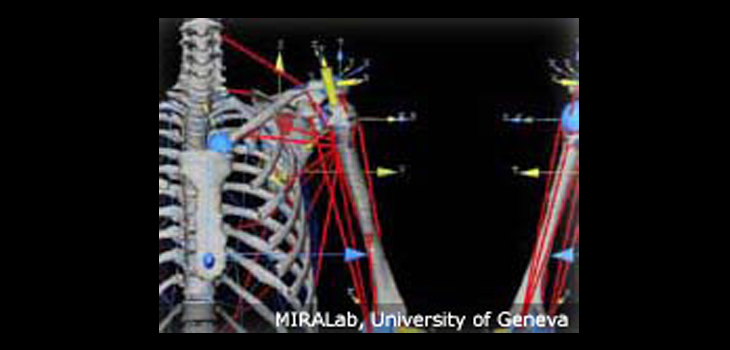
CO-ME – “The Computer Aided and Image Guided Medical Interventions”
Overview
CO-ME is a joint initiative of a large number of clinical and engineering research and development sites in Switzerland approved on the 15 December 2000 by the Swiss Department of Home Affairs to establish a new National Center of Competence in Research within the frames of the according Programm Call of the Swiss National Foundation on the field of Computer Aided and Image Guided Medical Interventions.
Goals: Based on the current competence of the participating research centers the following major goals have been assigned for the proposed NNCR: Development of enabling mathematical and technological components for computer aided medical interventions; Design of therapy planners and simulators which can predict the functional consequences of a proposed intervention; Development of image guided therapy systems; Establishing systems for advanced surgical education and training; Validating the effectiveness of clinical prototypes through clinical studies.
Objectives: The challenge of imaging science is to provide advanced capabilities and techniques for acquisition, processing, visualization and analysis of biomedical images to enable faithful extraction of scientific and clinical information. This is a difficult task. However, there have been considerable efforts in this direction in the last decade toward the display and visualization of the contained information. It is also possible to reconstruct or extract 3D surface of elements from those images. There is also a need for modeling and analysis of the relevant information coming from images, which can be used for other purposes. Reconstruction from different modalities needs to be matched and assembled in the same space. CHARM was to develop a Comprehensive Human Animation Resource Model and a set of software tools, allowing the modeling of the human complex musculoskeletal system and the simulation of its dynamics, including the finite element simulation of soft tissue deformation and muscular contraction from Visible Human Project data. The related data items may be associated semantically, physically or in some other useful form.
Modeling with medical images and data in our context provides both structural and topological information of different elements. In addition to displaying these elements, the interest is in using them for physically based simulations of deformations, motion generation and analysis, and model validation. The simulation of body deformations during motion requires taking into account the articulations of the skeletal structure as well as the mechanical properties of soft tissues. An incremental dynamic process of simulation accounts for the computation of deformation and interaction of all the soft tissues. A multi-layered, 3-dimensional, physical model of the human articulations will be produced with the following general aims: 1) 3D reconstruction 2) biomechanical modeling and 3) biomechanical diagnosis.
Workplan: There are three general aims to fullfill for the project in four years: 1) 3D reconstruction of a specific human articulation from using the present MRI and CT scan data 2) biomechanical modeling of the generic human articulation with topological movement and soft tissue deformation and 3) biomechanical diagnosis of the movement of a patient’s articulation comparing with generic articulation.
MIRALab’s contribution
A generalized approach towards functional modeling of human articulations.
Partners
Ecole Polytechnique Féderale de Lausanne, Virtual Reality Laboratory (VRLab)
Switzerland
vrlab.epfl.ch
Hôpital Universitaire de Genève (HUGE)
Switzerland
www.hcuge.ch
MIRALab, University of Geneva
Switzerland
www.miralab.unige.ch
